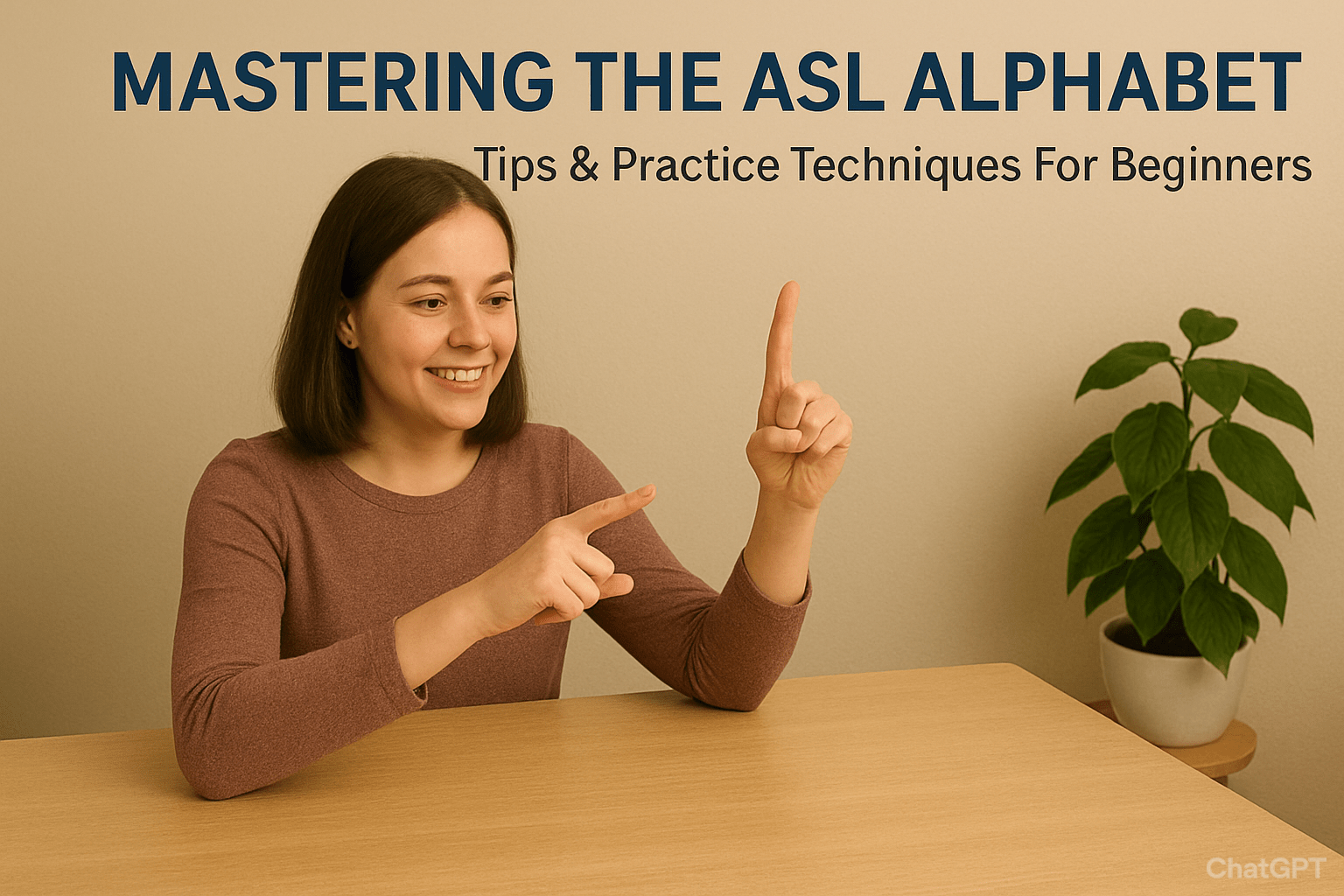Why Video Learning Works for Sign Language
When it comes to learning sign language, videos are a game-changer. Unlike spoken languages, sign languages rely heavily on movement, expression, and handshape—things that can’t be fully captured through text or pictures alone. That’s why more learners today are turning to sign language video lessons on YouTube and learning platforms like SignAcademy.org, where you can see and practice signs in real time with native signers.
But while videos are powerful tools, using them effectively makes all the difference. Randomly watching clips might help you learn a few words, but a structured, intentional approach can help you build fluency faster and remember signs longer.
In this article, we’ll walk through the best ways to learn sign language from videos, how to stay organized, and how SignAcademy’s curated lessons can help you stay on track.
1. Choose Reliable Sources (and Why It Matters)
Not all sign language videos online are accurate. In fact, some are created by learners rather than native signers, leading to incorrect or regionally inconsistent signs. That’s why it’s crucial to use curated sources.
Tip: Stick to platforms that focus on verified and region-specific signs. For example, SignAcademy.org’s Sign Dictionary compiles Indian Sign Language (ISL) videos directly from authentic YouTube channels used by Deaf educators and interpreters.
When in doubt:
- Look for native signers (you can usually tell by their fluency and facial expression).
- Check if the video mentions the sign language version (ISL, ASL, BSL, etc.).
- Verify consistency by cross-checking the same sign across different channels or dictionaries.
Reliable sources give you confidence that what you’re learning is authentic and culturally accurate.
2. Start Small and Stay Consistent
One of the biggest mistakes new learners make is trying to learn too many signs at once. A more effective strategy is to focus on theme-based learning.
Start with one category at a time—like “Family,” “Colors,” “Emotions,” or “Food.” You can explore these in SignAcademy’s Sign Categories section, which organizes lessons into manageable topics.
Here’s a sample plan to get started:
- Day 1–3: Watch and practice 5–10 signs daily.
- Day 4–5: Review the signs without looking at the video.
- Day 6–7: Use the signs in short phrases or mini-conversations.
This rhythm keeps your learning steady and memorable, rather than overwhelming.
3. Watch, Pause, and Mirror the Signs
Simply watching a video isn’t enough—you need to engage actively. The best way to do that is to pause and mirror what you see.
Here’s how:
- Watch the full clip once to understand the flow.
- Replay it and mimic each sign, paying attention to:
- Handshape (the position of your fingers)
- Movement (direction, repetition, and rhythm)
- Facial expression (which adds meaning)
- Record yourself doing the signs and compare it to the original.
This “see, do, review” cycle is proven to boost muscle memory—which is key for signing smoothly.
If you’re using SignAcademy’s curated video lessons, you’ll notice they’re often short and focused on one concept, making them perfect for this technique.
4. Use Slow Motion and Subtitles
Most YouTube videos allow playback speed control. Slowing a video down to 0.75x or even 0.5x can help you observe finer details in the signer’s hand movements and facial expressions.
Also, whenever possible, turn on subtitles or closed captions. Some sign language videos include English gloss (textual representation of the sign), which can help you understand the context of a sign better—especially if it changes meaning depending on how it’s used.
Combining visual observation with reading cues strengthens both recognition and recall.
5. Create Playlists for Thematic Learning
If you’re learning via YouTube, you can create custom playlists by topic—like “Daily Conversations,” “Numbers & Time,” or “Places.”
This is where SignAcademy stands out—it already does this for you. Each sign in the Sign Dictionary is tagged and categorized, so you can browse videos by theme instead of hopping across random YouTube channels.
Organized learning helps you:
- Avoid repetition and confusion
- Measure progress by topic
- Reinforce learning with context-based practice
If you want to supplement this, make your own YouTube playlists or download offline collections using your favorite educational app.
6. Engage Emotionally With the Content
One underrated trick for retaining signs is emotional connection. When you learn a sign from a story, a conversation, or a video that moves you emotionally, your brain remembers it better.
For example, watch short Deaf vlogs, interviews, or storytelling videos. Try to interpret the signs, then check your accuracy later. It’s not just vocabulary—it’s culture and connection.
SignAcademy’s blog section shares stories, lessons, and learning tips that blend real-world context with sign language learning, helping you engage beyond just memorizing words.
7. Review Regularly and Track Your Progress
Learning sign language is a visual and physical skill, and like any skill, it needs repetition.
Make it a habit to:
- Review older videos weekly
- Quiz yourself by watching videos on mute and interpreting them
- Use flashcards or practice apps for recall
- Track your progress (for example, “This week I mastered 20 new signs in the ‘Food’ category”)
Repetition is not boring—it’s how your brain cements movement-based knowledge into long-term memory.
8. Join Online Communities
Learning sign language is more fun when you’re part of a community. Join Facebook groups, Reddit forums, or Discord servers for sign language learners. Better yet, participate in discussions where learners share videos and correct each other’s signs.
When you interact with others, you get instant feedback, exposure to different signing styles, and the motivation to stay consistent.
Conclusion: From Watching to Signing
Videos make it possible for anyone, anywhere, to learn sign language visually and interactively. But the secret isn’t in the number of videos you watch—it’s in how you use them.
Choose reliable sources, practice actively, organize your learning, and connect emotionally with the material. Over time, your understanding of signs, expressions, and grammar will come together naturally.
If you’re ready to learn in a structured way, explore SignAcademy.org’s Sign Dictionary today. It’s a growing collection of curated sign language video lessons, verified by the community, designed to help you learn signs accurately and confidently.


